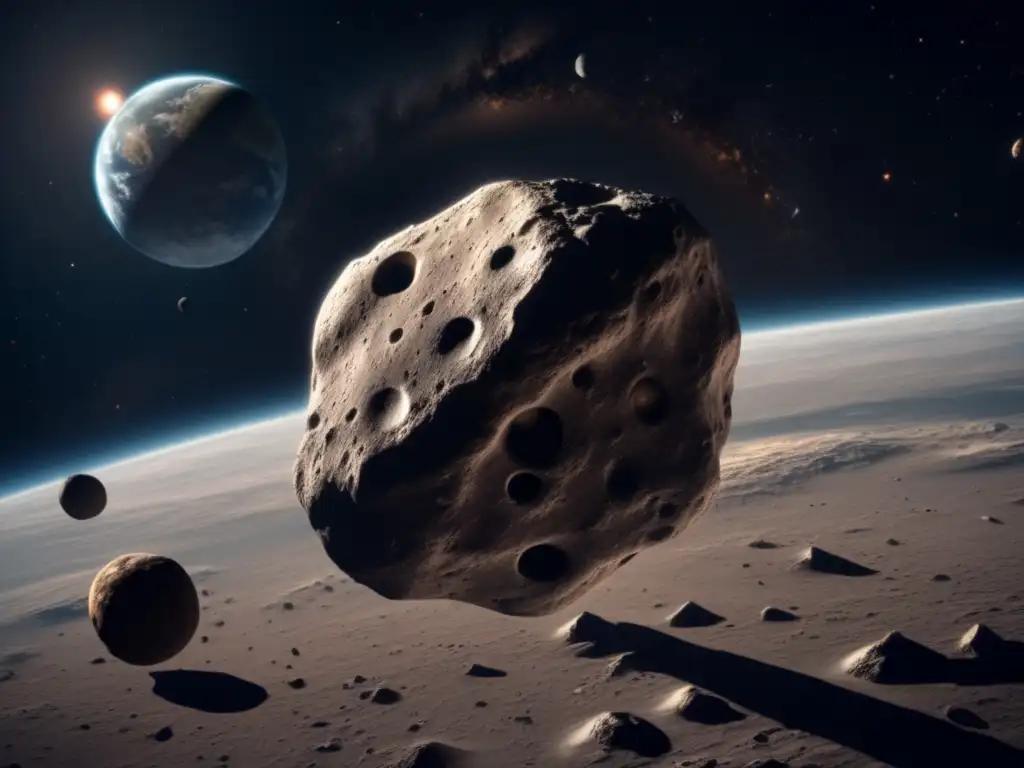Saving The Planet: Current Approaches In Asteroid Impact Prevention

Introduction
Asteroids pose a significant threat to the planet Earth. If a large asteroid were to strike our planet, it could cause widespread devastation, including loss of life and damage to infrastructure. While the probability of an impact is low, the consequences would be catastrophic, which is why planetary defense has become a top priority for space agencies worldwide.
Current Approaches for Asteroid Impact Prevention

Surveying Asteroids
The first step in preventing an asteroid impact is detecting these objects before they reach the Earth. NASA's Near-Earth Object (NEO) program tracks asteroids that could potentially impact our planet. The program uses ground-based telescopes and space-based observatories to detect and track asteroids, as well as to determine the likelihood of an impact. Surveys carried out by the program have revealed thousands of potentially hazardous asteroids that could threaten Earth in the future.
Deflecting an Asteroid's Path
If an asteroid is detected to be on a collision course with Earth, various techniques exist to deflect its path away from our planet. One approach involves using a spacecraft to rendezvous with the asteroid and "push" it off course using a technique known as the kinetic impactor method. This involves impacting the asteroid with a spacecraft at high speed, causing it to change course. Another approach that has been proposed is the use of a gravity tractor, which involves placing a spacecraft near the asteroid to gradually alter its trajectory using gravitational attraction.
Funding Planetary Defense Strategies
In 2015, the United States passed the NASA Authorization Act, which funds efforts to locate and track potential asteroid threats. NASA's Planetary Defense Coordination Office (PDCO) also coordinates international efforts to detect and prevent asteroid impacts. Other countries such as Russia and China have also invested in technologies for planetary defense.
Challenges in Asteroid Impact Prevention

Early Detection
The biggest challenge in preventing an asteroid impact is early detection. Despite the progress made by the NEO program, there are still asteroids that could potentially impact Earth that have yet to be discovered. To improve detection, new tools such as advanced telescopes and space-based equipment are needed. Additionally, coordinating international efforts is important to ensure that all potential threats are monitored closely.
Choosing the Right Approach
Choosing the right approach to deflecting an asteroid's path is another challenge. The kinetic impactor method, for example, may not work on all types of asteroids. Depending on the asteroid's size and composition, different strategies may be required.
Costs Involved
The cost of planetary defense is also a significant challenge. Detecting and deflecting asteroids requires sophisticated equipment and technology, which can be expensive. Additionally, investing in planetary defense competes with other space exploration priorities, making obtaining funding difficult.
Frequently Asked Questions

-
Can we predict when an asteroid will impact Earth?
While we can predict the likelihood of an asteroid impact, predicting the exact time and location of an impact is difficult. This is why early detection is critical.
-
What happens if we cannot prevent an asteroid impact?
If an asteroid were to hit Earth and cause widespread destruction, recovery efforts would depend on the size and location of the impact. There are plans in place to deal with the aftermath of such an event, but preventing such a disaster remains the priority.
-
How likely is it that an asteroid will impact Earth?
The probability of an asteroid impact is low, but the consequences of such an event would be catastrophic. This is why planetary defense efforts are so important.
-
Is there an international effort to prevent asteroid impacts?
Yes, the Planetary Defense Coordination Office coordinates international efforts to detect and prevent asteroid impacts.
-
What can I do to help prevent asteroid impacts?
While there is little that individuals can do to prevent asteroid impacts, supporting space exploration and research in planetary defense can help fund and expand these efforts.
Conclusion
Preventing asteroid impacts is a critical priority, and numerous efforts are underway to detect and deflect potentially hazardous asteroids. The challenges involved in this process are significant, but advancements in technology and international cooperation are making progress possible. By continuing to invest in planetary defense, we can help protect the planet and ensure the safety of future generations.
Share your thoughts on asteroid impact prevention in the comments below and don't forget to visit www.asteroidrealm.com for more asteroid-related content!
Additional Resources

- NASA's Planetary Defense Coordination Office
- NASA's Center for Near Earth Object Studies
- European Space Agency Planetary Defense
 Planetary Shield: Technologies For Asteroid Defense
Planetary Shield: Technologies For Asteroid Defense Deflecting Doom: Strategies To Prevent Asteroid Collisions
Deflecting Doom: Strategies To Prevent Asteroid Collisions From Detection To Diversion: Current Tools For Asteroid Defense
From Detection To Diversion: Current Tools For Asteroid DefenseIf you want to discover more articles similar to Saving The Planet: Current Approaches In Asteroid Impact Prevention, you can visit the Planetary Defense category.
Leave a Reply

Articulos relacionados: